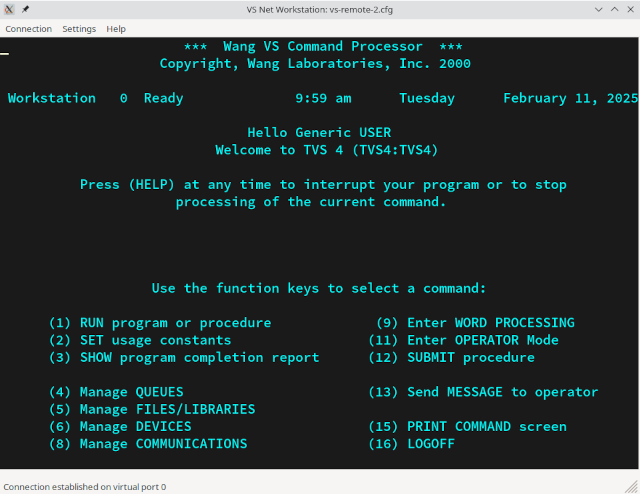
20 years ago, I was facing a problem. This problem consisted of old software and old hardware which was no longer being manufactured. Support was being phased out yet the software remained in use for critical business functions. Others faced the same problem, propping up their aging systems with parts scrounged from eBay and electronics recyclers. Something that would give anyone nightmares.
While doing some research I came across the concept of emulation: virtualization of an entire system through software. It occurred to me that the obsolete hardware I was dealing with was nearly a decade old and it was possible that emulation, when run on modern hardware, would probably be just as fast or faster than the original system.
Thus, the “Wang VS Emulator” was born. What’s a Wang VS? The VS is a high-end 32-bit minicomputer system popular throughout the 1980s and 1990s. The first VS was introduced in 1977, and the last in 1998. VS production ended shortly thereafter, and support finally ended in the early 2010s. The VS had its roots in the IBM 370 mainframe, with a CPU instruction set and languages very similar to the IBM offerings at the time. However, the VS was designed to be much simpler to operate and maintain. The VS primarily ran COBOL, although BASIC, RPG, and C were available. The VS also had its own 4GL-like application development environment and integrated database called PACE. While not technically a mainframe, the VS was “mainframe-like”, although I would personally compare it to IBM midrange systems of the time (AS/400, iSeries, or what is now known as IBM i).
The objective of the “Wang VS Emulator” was hardware emulation at a level where it could run the VS Operating System, all tools and utilities, and any customer applications in a seamless manner. This objective was achieved, and one could simply restore tapes created on the VS (or attach the original Wang disks) to the emulator environment and connect to it using the exact same PC client software that is used to connect to the original VS. No conversion or user training was necessary. It was initially released as a commercial offering in 2004 (TransVirtual Systems VSGX). In the early 2010s, there were nearly 100 sites around the world running their core business applications on the VSGX.
This project and it’s success demonstrate the fact that sometimes the conventional solution isn’t always the best one. These companies were facing the prospect of having to port, migrate, or completely rewrite their core business applications in order to avoid obsolescence. Instead, a virtual environment was created to preserve the platform and applications as-is and extend the life cycle while at the same time offering a path into the future. Many of these companies utilized the virtual system’s underlying platform (Linux) as a way to extend and enhance their legacy application base without having to completely rewrite or scrap their existing code. To this day a handful of them still remain on the VSGX and have developed innovative extensions bringing their legacy applications into the world of cloud computing, open-source, and AI.
There are thousands of custom or obsolete proprietary applications still in use at companies around the world. Platform virtualization can allow the lifecycle of these applications to be extended, enable them to be moved offsite into a cloud environment, provide disaster recovery solutions, or simply allow them to be moved off hardware that is at risk of failure.